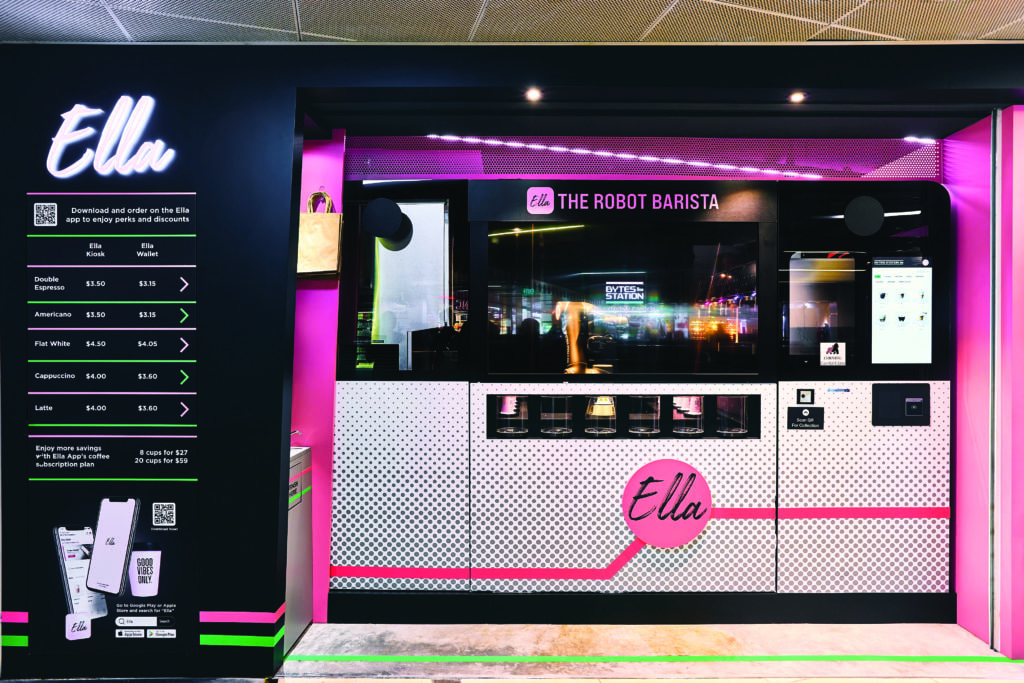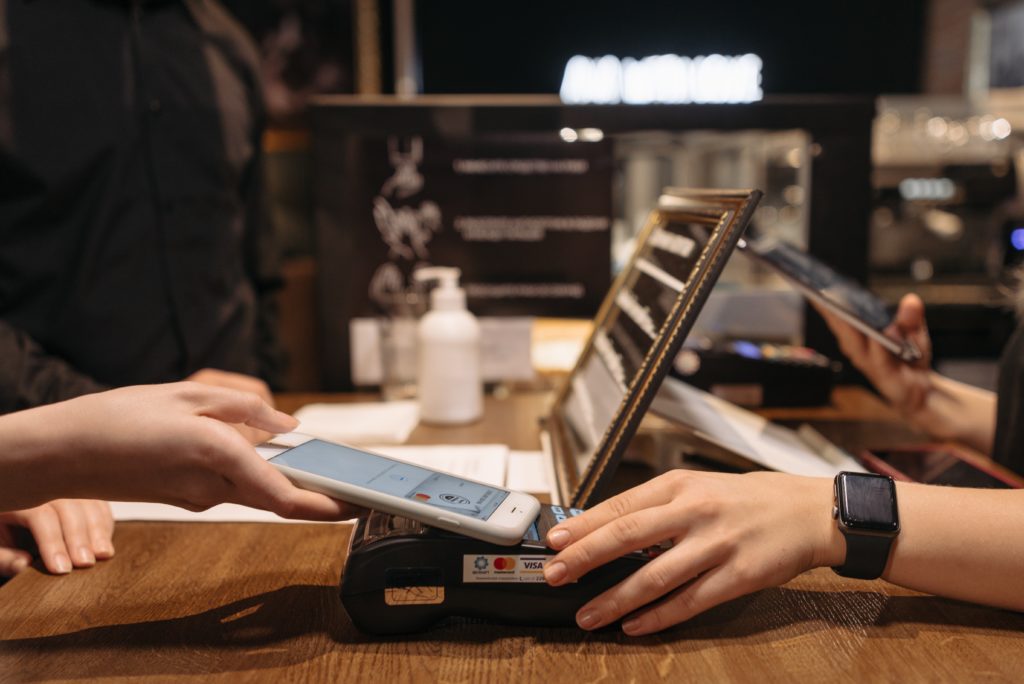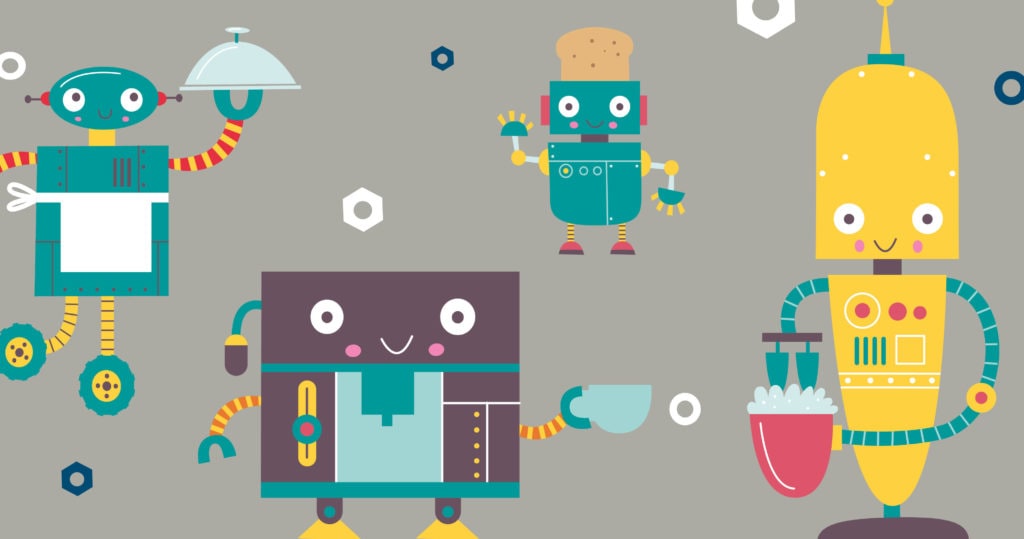
The concept of a robot is commonplace, both in fiction and in reality. Car manufacturing, for example, is defined by robotic assembly lines. Yet there is often confusion about where the line is drawn between a robot and a simple piece of electronic equipment – especially in foodservice. Is a blender a robot? Some would say yes.
“Anything that aids the preparation or cooking production process is considered a robot,” says Khaled Halabi FCSI, director of design at US consultancy Cini-Little. “A kitchen blender or a processor is technically a robot, hence the name robot coupe, which is now synonymous with any brand of blenders. However, more recently that term is reserved for armed robotics like the ones we see flipping burgers or frying French fries.”
“There are also automated pizza assembly systems that can produce up to 100 pizzas per hour,” he adds. “Also, we should not forget the speed ovens that can combine several tasks at one push of a programmed button. Automation in the controls of equipment is a very important part of the robotic process.”
Is there an argument, however, to consider robotics as something more than just the replacement of a human limb with a machine? “McDonald’s at one point wanted a fully automated kitchen – we created an automated frying station with a robot arm replacing a human arm – but the core of the process does not change,” says Phil Radford, senior vice president at equipment manufacturer Welbilt. “People are afraid to change the process, so it is just human replacement, not real robotics.”
“What qualifies as a robot is a grey area,” he adds. “Automation does not necessarily involve robotics. A robot is versatile, not just for automating a specific process. The key is that a real robot will benefit when it is more like human intelligence and can learn.”
Human brain replacement
Even if your definition of a robot is something more complex than a blender, there are many breakthrough innovations that have brought the concept to the attention of chefs, designers and customers. Perhaps the most famous example is Flippy, the burger-flipping robot, the latest version of which is being used by burger chain White Castle to handle food preparation tasks such as fry basket filling, emptying and returning. Flippy 2 is more autonomous and uses AI to differentiate between fries, onion rings or chicken tenders to adjust the cooking time.
“Flippy is a simple robot but if, in the future, it has a camera that looks at the burger and sees how it shrinks when it cooks, sees how it responds to heat, and adapts its process in a semi-intelligent way, then it will be more like human brain replacement,” says Radford.
Sally, a robot that assembles custom salad bowls on-demand from fresh ingredients, attracted attention when it was first launched. However, in July 2022 it was announced that its creator, Chowbotics, would be shut down by new owner DoorDash, which reported that the robot has not met expectations. Pazzi Robotics has come to the market with a fully autonomous pizza restaurant, which uses a cloud-connected software and machine learning platform with robotic modules to handle the challenging task of making, shaping and cooking pizza dough.
“Truebird has launched the Micro-Cafe coffee machine in Seattle that is true robotics,” says Radford. “It is a hidden robot and one of the most beautiful pieces of engineering I’ve seen. It takes a coffee cup with floating pucks, moves it through the system, makes the coffee, and delivers it with an element of theater.”
“These inventions all primarily revolve around speed of service and cost of production,” says Halabi. “One unit that always comes to mind is the pancake dispenser sometimes found in airport lounges or hotel breakfast areas. With a click of a button, batter is poured onto a hot plate and a cooked pancake is dispensed a few seconds later. Think of the cost savings when compared to a fully serviced pancake breakfast station.”
“Covid was a big driver,” says Bill Bender FCSI, founder and principal of W.H. Bender & Associates. “There has been a rush to increase the minimum wage, which is now $15 per hour in California, so costs are rising, which leads to cutbacks in staff. But you still have to get the job done. Then Covid hits, and it is hard to find and keep employees, so there is increased cost pressure and a shortage of employees. The driver is to keep labor costs down and address shortages of labor.”
A crucial proving ground
UK-based technology company Karakuri has created the Semblr robot, which produces personalized hot and cold meals with complete accuracy of portion size, giving customers total traceability of ingredients, nutrients, calories and quantity for every meal. Able to create 110 meals per hour, it optimizes scarce human resources, thus improving thin margins by controlling costs.
Semblr is being proven at the headquarters of Ocado, where facilities management company Atalian Servest is in charge of feeding 4,000 staff. As the world’s first installation of foodservice robotics in a large, high-volume catering environment, it is a crucial proving ground for foodservice robots.
“We had to develop the technology to dispense food, which is hard to work with, as it changes over time, there are different viscosities and textures, and it is hard to hold it and serve it in a presentable way,” says Amelia Jonas, director of product at Karakuri. “Fresh salsa with coriander and chilli, for example, was a real challenge. It can’t be served in a great clump.”
Semblr gives Ocado’s employees lots of choice in what goes into their meals, being capable of creating 2,700 different combinations of the dishes on offer. Customers can specify down to the gramme what hot and cold items, proteins, sauces and fresh toppings are included.
“Initially, we put 17 ingredients into the dispenser, looking at how we would put them together, shape and cut them,” says Chris Ince, chef director at Altalian Servest. “The more we trialled it, the more we found was possible. Chefs were open-minded from the start, though there was some fear of the unknown, but it is their food coming out of the robot, which is simply keeping the service element separate.”
So far, Semblr has proven popular with Ocado staff, for whom it is a real talking point. “The level of customization has brought more repeat customers,” says Ince. “Specifying the level of carbohydrate or protein in meals suits people with specific needs, and pricing is per gramme of what you eat. It caters for everyone. The whole idea would have been a ghastly mess without a robot, which has removed all the inaccuracies and all the risk.”
Customers benefit from the customization, and kitchen employees have been redeployed to focus on creating food, not spooning it out. The next step is to develop Semblr for canteens and QSR restaurants, which will see it become modular to fit anywhere without the footprint of a big robotic arm.
Disruptor or dystopia?
The big questions going forward are whether kitchens will become fully robotic, and whether robots will change the nature of foodservice. As yet, it is too early to tell. “Most robotic technologies are very effective in what they are designed to do,” says Halabi. “Full robotic arm technologies are somewhat harder to assess at this point in time, but the products are ever improving in terms of efficiency, so it is just a matter of time before some almost fully automated kitchens are common.”
Front of house applications will certainly become more common in the near future. Richtech Robotics, for example, has created an autonomous foodservice robot called Matradee that delivers food to tables, is capable of opening kitchen doors, and can be programmed remotely with a smartwatch. Using machine Vision and LiDAR, it can intelligently avoid obstacles. Servi from Bear Robotics also runs the food to tables, allowing staff to focus on service.
In any decision on automation, however, operators must address the issue of upfront cost vs long-term savings. “Over the past few years, robotics have been hyped as an innovation without looking at the cost/benefit analysis,” says Halabi. “We consider the payback to our clients before recommending a potential robotic application. A good cost-to-benefit return is less than five years, with less than three years being a home run. The jury is still out.”
“No one has yet found an application where the whole process is handled robotically,” notes Radford. “It is still more about human replacement to improve cost, speed and reliability of an individual step, and there is the cost of the robot and the challenge to program it to do what people do with the dexterity of their arms.”
When AI and robotics combine to mimic the human brain rather than just a limb, then robotic kitchens could be a realistic proposal, though one stumbling block remains.
“Large investments have been made and robots can replace some of the human brain as well as the human arm, but people like food prepared by humans,” says Bender. “It impacts the guest experience, so we are a long way from fully robotic kitchens.”
Jim Banks




